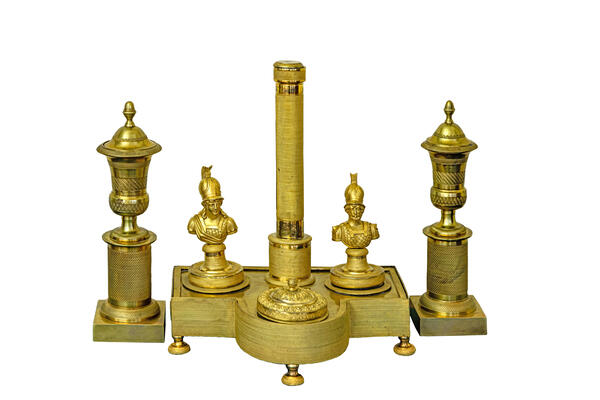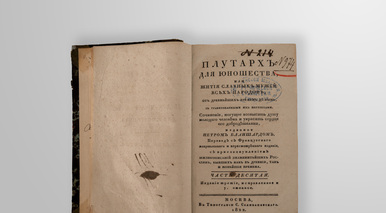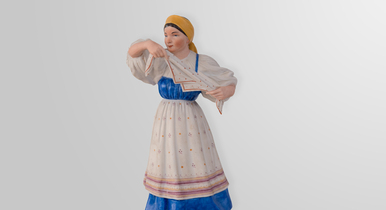In the 19th century, an inkstand became an essential element of any desk — both practical and decorative.
The history of this important accessory used by writers, officials, and most educated people dates back to Ancient Egypt and Ancient China where people first started writing on parchment and papyrus. According to numerous archaeological finds, any suitable vessels were used as inkwells, including cups, horns, and flasks.
By the 19th century, there were writing sets designed for any situation: large ones were intended for multiple items and occupied the central place on desks, while smaller ones were equipped with tightly closing cases and were brought along anywhere.
A writing set could include up to ten different items, including pen holders, sandboxes, matchbox holders, pen wipers, paper clip dispensers, and paperweights. The materials and types of décor, including gilding, inlay, and painting, also varied depending on the owner’s status.
The displayed gilded bronze set is rather small. It is made in a modest, minimalist style. The décor of the inkwells and cup-shaped candlesticks features classical motifs: the lower part of the candlesticks resembles strict Doric columns, and the inkwell lids are decorated with busts of ancient military leaders.
Classical motifs — minimalist forms, decorative patterns, and subjects — were found in Russian art up to the mid-1830s.
The set also includes a rather unusual item — a sandbox. A sandbox was filled with the finest sand that was used before the invention of blotting paper. The sand was sprinkled onto a freshly written page to absorb an excess of liquid and prevent the ink from smearing.
Due to its functionality, bronze was one of the most common materials for making inkwells.
The exhibit was made by stamping, but bronze items
were often finished — engraved or chased — manually after casting. Bronze was
successfully accompanied by details made of porcelain, glass, mother-of-pearl,
crystal, or ornamental stones.




